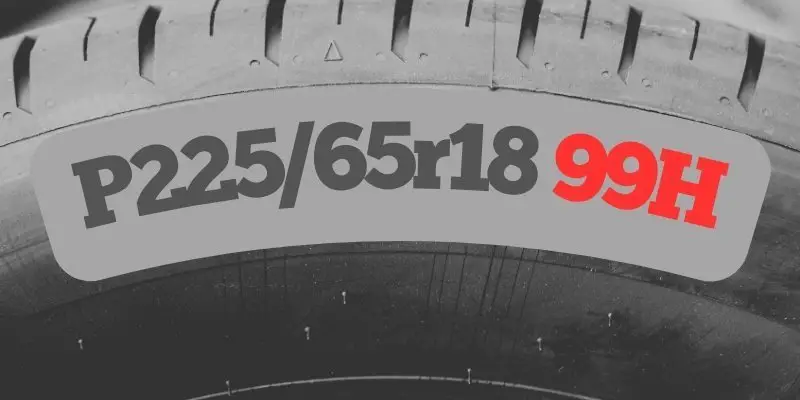What Does 99H Mean on a Tire?

The 99H marking on a tire indicates its load index and speed rating. The number 99 represents the tire’s maximum load capacity, while the letter H denotes its maximum speed capability.
This alphanumeric code helps drivers choose the right tires for their vehicles and driving needs.
Decoding the Tire Code
Have you ever looked at your car’s tires and wondered what all those numbers and letters mean? It’s like a secret code that holds important information about your tires.
Let’s break down the mystery of the 99H marking and what it means for your driving experience.
What’s in a Number?
The number 99 in our tire code is called the load index. It tells us how much weight the tire can safely carry. Think of it as the tire’s strength rating.
Here’s a simple way to understand it:
- Each number corresponds to a specific weight in pounds or kilograms
- The higher the number, the more weight the tire can handle
- A load index of 99 means the tire can support up to 1,709 pounds (775 kg)
So, when you see 99 on your tire, you know it’s built to carry a good amount of weight. This is crucial for keeping your car balanced and safe on the road.
The Need for Speed
The letter H in our tire code is the speed rating. It tells us the maximum speed the tire can handle safely. Each letter in the alphabet represents a different speed limit.
Here’s what H means:
- H-rated tires can safely travel up to 130 mph (210 km/h)
- This rating is common for many passenger cars and some sports cars
- It’s a good balance between performance and everyday driving needs
Remember, just because your tires can handle high speeds doesn’t mean you should always drive that fast. Safety first!
Why These Numbers Matter
You might be wondering, “Why should I care about these codes?” Well, they’re more important than you might think. Here’s why:
- Safety: Using tires with the right load index and speed rating helps keep you safe on the road.
- Performance: Matching your tires to your car’s needs ensures optimal handling and fuel efficiency.
- Legal requirements: In some places, it’s illegal to use tires that don’t meet your car’s specifications.
Choosing the Right Tires
When it’s time to buy new tires, the 99H code (or whatever code is on your current tires) is your guide. Here are some tips:
- Check your car’s manual for the recommended tire specifications
- Make sure the new tires have at least the same load index and speed rating
- You can go higher in either rating, but never lower
Real-World Example
Let’s say you own a mid-size sedan. The manufacturer recommends tires with a 99H rating. This means they expect you might load the car up to about 1,709 pounds and drive at highway speeds.
If you often carry heavy loads or drive long distances on highways, sticking with the 99H rating is a good choice. But if you rarely carry heavy items and mostly drive in the city, you might be fine with a lower load index.
Other Common Ratings
While we’ve focused on 99H, there are many other tire codes out there. Here are a few examples:
- 95T: Good for many compact cars
- 102V: Often found on larger sedans or small SUVs
- 110Y: Common on high-performance sports cars
Each combination of numbers and letters tells a unique story about what the tire can do.
Conclusion
Understanding what 99H means on your tire is more than just knowing a code. It’s about making informed decisions for your safety and your car’s performance.
The load index and speed rating work together to ensure your tires can handle the weight of your vehicle and the speeds you drive.
Next time you’re shopping for tires or just curious about your current ones, you’ll know exactly what those numbers and letters mean. Remember, the right tires can make all the difference in your driving experience, so choose wisely!

Meet Caitlin McCormack, a Tire Size Expert and Blogger Passionate About Everything Related to Tires. With Years of Experience in the Tire Industry, Caitlin Has Become an Expert in Tire Sizes and Their Impact on Vehicle Performance.
